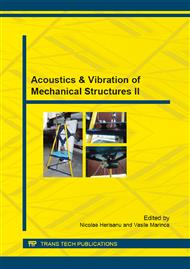p.230
p.236
p.242
p.249
p.257
p.262
p.267
p.273
p.278
Determining the Reaction Forces and Torques that Appeared in the Ankle Joint during Normal Walking
Abstract:
The human body is a very complex system which is studied by doctors but also by engineers. The human motion analysis is an important topic in the biomechanical field. It is essential to determine the forces and torques that appears in joints during daily activities for the development of implants and prosthesis. The goal of this paper is to establish time variation of force and torque in the human ankle joint during one walking step. For this experiment we used two equipments witch record the ground reaction force respectively the angular motion for the ankle joint. Based on these measurements and using the anthropometric patient parameters we developed an application (using in Matlab – Simulink software) that calculates the forces and torques that appear in the human ankle joint. The application simulates the motion taking into account the mass inertia moments. The results of simulation are the forces and torques that appear in ankle joint. The application can simulate any type of human motion, according to the input data from the excel file. These results can be used further for the optimization of ankle implants or prosthesis.
Info:
Periodical:
Pages:
257-261
Citation:
Online since:
October 2015
Authors:
Keywords:
Price:
Сopyright:
© 2015 Trans Tech Publications Ltd. All Rights Reserved
Share:
Citation:


